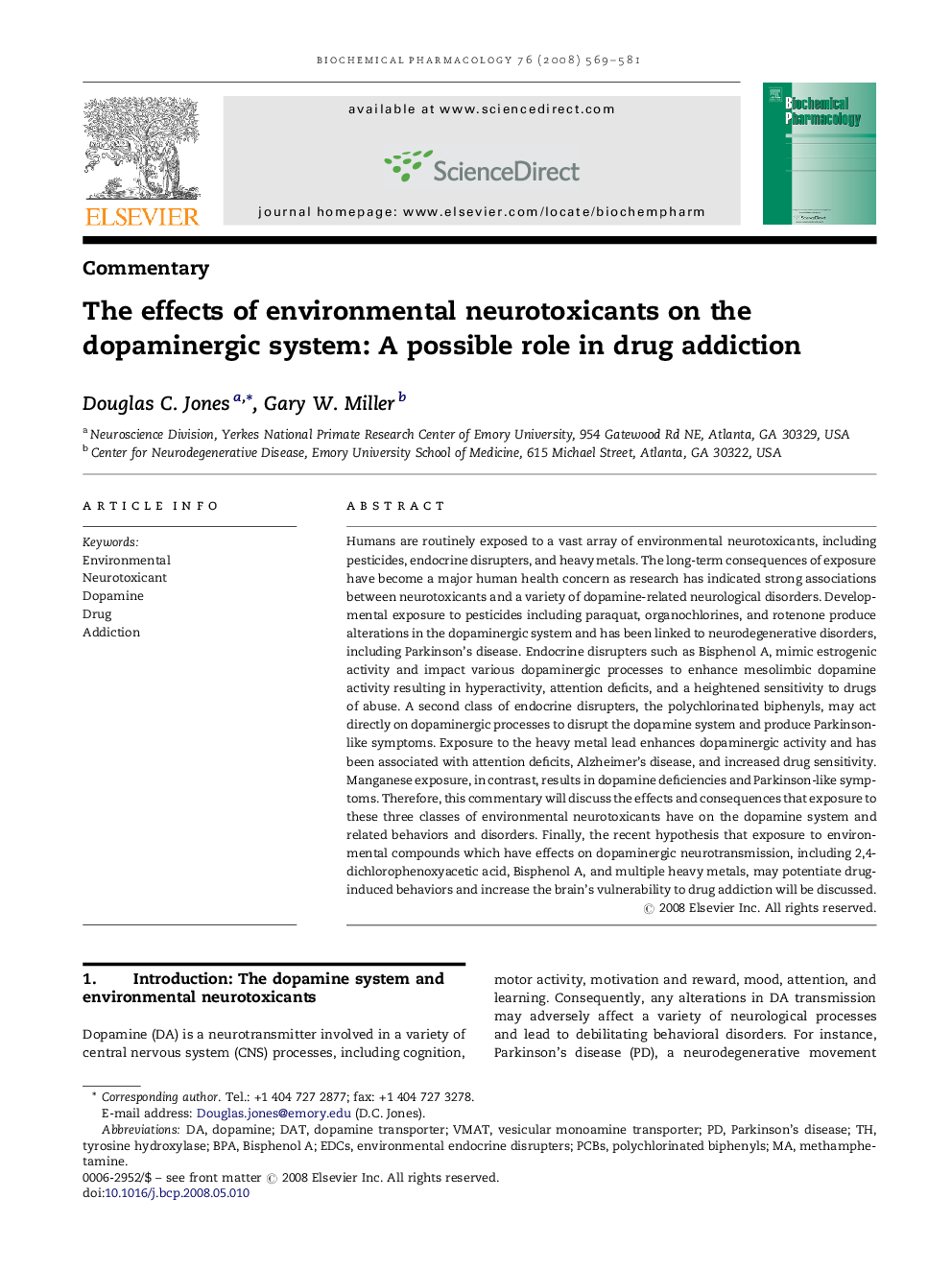| Article ID | Journal | Published Year | Pages | File Type |
|---|---|---|---|---|
| 2514753 | Biochemical Pharmacology | 2008 | 13 Pages |
Humans are routinely exposed to a vast array of environmental neurotoxicants, including pesticides, endocrine disrupters, and heavy metals. The long-term consequences of exposure have become a major human health concern as research has indicated strong associations between neurotoxicants and a variety of dopamine-related neurological disorders. Developmental exposure to pesticides including paraquat, organochlorines, and rotenone produce alterations in the dopaminergic system and has been linked to neurodegenerative disorders, including Parkinson's disease. Endocrine disrupters such as Bisphenol A, mimic estrogenic activity and impact various dopaminergic processes to enhance mesolimbic dopamine activity resulting in hyperactivity, attention deficits, and a heightened sensitivity to drugs of abuse. A second class of endocrine disrupters, the polychlorinated biphenyls, may act directly on dopaminergic processes to disrupt the dopamine system and produce Parkinson-like symptoms. Exposure to the heavy metal lead enhances dopaminergic activity and has been associated with attention deficits, Alzheimer's disease, and increased drug sensitivity. Manganese exposure, in contrast, results in dopamine deficiencies and Parkinson-like symptoms. Therefore, this commentary will discuss the effects and consequences that exposure to these three classes of environmental neurotoxicants have on the dopamine system and related behaviors and disorders. Finally, the recent hypothesis that exposure to environmental compounds which have effects on dopaminergic neurotransmission, including 2,4-dichlorophenoxyacetic acid, Bisphenol A, and multiple heavy metals, may potentiate drug-induced behaviors and increase the brain's vulnerability to drug addiction will be discussed.
